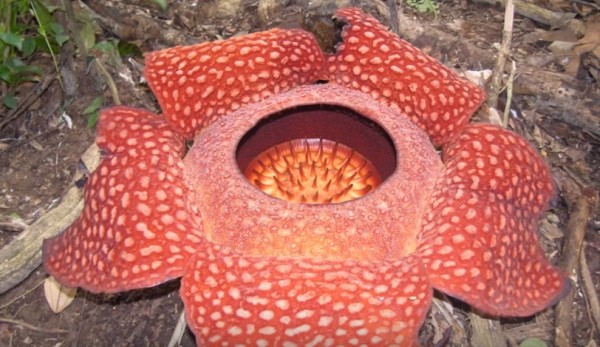Chinese Scientists Find Rare Endangered Flower
| Charissa Echavez | | Jan 31, 2016 11:05 AM EST |
(Photo : YouTube Screenshot) Chinese scientists have found a rare, parasitic flower known as rafflesiaceae in the heart of a tropical rainforest in Xishuangbanna. Although the specie found is relatively small, scientists are conducting DNA testing to find out if the discovered flower is the one thought to be extinct or an entirely new specie.
A flower once thought to be extinct has been found in China. The rare parasitic plant was last recorded in the 1980s in deep southern part of Yunnan.
However, scientists from the Xishuangbanna Tropical Botanical Garden found two photos on a chat messaging app WeChat profile of a local tourist guide early this month of what seems to be the extinct parasitic plant. The images showed a oddly shaped flowers resembling a red mushroom with no roots and leaves.
Like Us on Facebook
Researchers recognized that the flowers could be rafflesiaceae, which has not been found in China for nearly 30 years. The scientists performed a field investigation and discovered the plants themselves, blooming at the heart of the rainforest.
Rafflesiaceae was coined after British statesman Sir. Thomas Stamford Raffles who found and gathered the specimen in his expedition to Sumatra in 1818. The family of Rafflesiaceae is a rare parasitic plant known to have the largest flower in the world. For instance, its specie Rafflesia arnoldii can grow as large as over 100 centimeters in diameter and weigh as much as 10 kilograms. It mostly blooms in the tropical forests of east and Southeast Asia and is also distinctly known for its carcasses-like scent thus it is also dubbed as "corpse flowers" or "meat flower." The plant does not have stems, roots, leaves or any photosynthetic tissue of its kind. It is an endoparasite as it entirely depends on other plants for sources of water and nutrients.
However, the flowers found in Xishuangbanna were only about 10 to 12 centimeters in width, not as large as those found in other places.
As for now, plant classification at the botanical garden specialist Tan Yunhong revealed that they are performing DNA tests on the cell samples obtained from the flowers to determine if what they found were is just a relative of rafflesiaceae or an entirely new specie. However, they admitted that the process could be difficult as the rafflesiaceae most of the time shares its genes with host plants, a process called horizontal gene transfer.
"We will only use the most stable genes to analyze the specimens' genetic relationship with other parasitic plants, but we will not know how horizontal gene transfer will influence the result until we finish gene sequencing and start the analysis," Tan explained.
Despite the outcome, the research will shed light on the little known rafflesiaceae. Liu Guangyu, another researcher at the botanical garden, claims that they are performing the study as quickly as possible, considering the fact that how the that plant appeared, grew and fertilized were not known in the first place, and after quite some time, it might disappear again.
The International Union for Conservation of Nation has declared all known rafflesiaceae species as endangered.
TagsXishuangbanna Tropical Botanical Garden, china, largest flower, Rafflesiaceae, botanical garden, corpse flower, meat flower
©2015 Chinatopix All rights reserved. Do not reproduce without permission
EDITOR'S PICKS
-

Did the Trump administration just announce plans for a trade war with ‘hostile’ China and Russia?
-

US Senate passes Taiwan travel bill slammed by China
-

As Yan Sihong’s family grieves, here are other Chinese students who went missing abroad. Some have never been found
-

Beijing blasts Western critics who ‘smear China’ with the term sharp power
-

China Envoy Seeks to Defuse Tensions With U.S. as a Trade War Brews
-

Singapore's Deputy PM Provides Bitcoin Vote of Confidence Amid China's Blanket Bans
-

China warns investors over risks in overseas virtual currency trading
-

Chinese government most trustworthy: survey
-

Kashima Antlers On Course For Back-To-Back Titles
MOST POPULAR
LATEST NEWS
Zhou Yongkang: China's Former Security Chief Sentenced to Life in Prison

China's former Chief of the Ministry of Public Security, Zhou Yongkang, has been given a life sentence after he was found guilty of abusing his office, bribery and deliberately ... Full Article
TRENDING STORY

China Pork Prices Expected to Stabilize As The Supplies Recover

Elephone P9000 Smartphone is now on Sale on Amazon India

There's a Big Chance Cliffhangers Won't Still Be Resolved When Grey's Anatomy Season 13 Returns

Supreme Court Ruled on Samsung vs Apple Dispute for Patent Infringement

Microsoft Surface Pro 5 Rumors and Release Date: What is the Latest?












